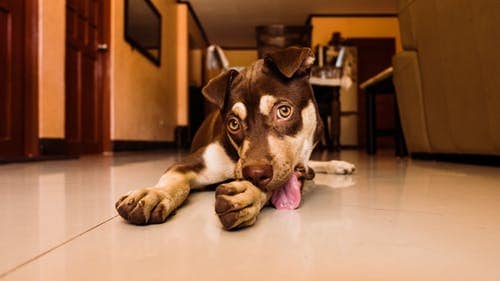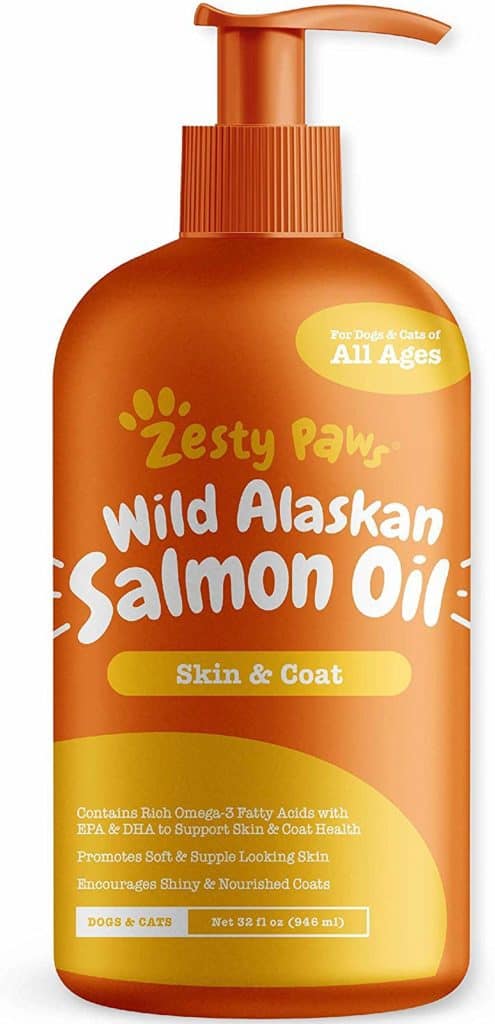Which Dog Breeds Are Hypoallergenic?| Advice From A Vet
So many people love dogs, but unfortunately some of those people are quite allergic to the hair and dander that dogs shed on a constant basis. That has led to the search for creating and breeding a dog that doesn’t do this. So which dog breeds are hypoallergenic?
Technically none of them.

That’s right. The idea that you can purchase/adopt a hypoallergenic dog is a creation of less-than-honest dog breeders and pet stores. Every dog will shed skin cells and/or hair. The key is…are YOU allergic to that?
Table of Contents
What Does Hypoallergenic Even Mean?
The definition of hypoallergenic is that something is less likely to cause an allergic reaction. That means different things to different people.
For some people, being allergic means that they sneeze and have runny, itchy eyes. Others may have more severe reactions that cause rashes on their skin or even makes them feel physically ill.
Why Are Some Dogs Less Hypoallergenic Than Others?
Some dogs just naturally shed less than others. Their coat is finer and perhaps only has a single layer. Some dog breeds also seem to naturally repel dirt and other environmental contaminants easier than others.
This is a trait that can be bred for, but what you’re looking for is a dog that doesn’t have a thick undercoat. Dogs that naturally have a double coat will usually go through one or two major shedding cycles a year as their coat needs to naturally “turn over” to keep it healthy.
How Can I Make My Dog Less Hypoallergenic?
Sometimes people don’t realize that they have allergies to dogs before they get one. They’ve never been in close contact with a dog until they brought one into their home and begin living with it 24/7.
Then one day they start noticing they are getting a bit of a rash, maybe some coughing or sneezing, and sooner or later the bad news is revealed: they are allergic to their own dog.
That’s really bad news for many people. They’ve already strongly bonded to their dog, and there’s just no possibility that they will ever let the dog go somewhere else.
The good news is that there are some things that you can do to help with your allergy.
- First is to visit your own doctor and potentially see an allergy specialist to help you treat your allergy symptoms. They may have some special medications that will help you react less to your dog.
- Having someone groom the dog regularly will help it be less allergenic. Keeping the hair trimmed short and bathing the dog regularly will help to reduce the dander. Don’t do this yourself if you can help it. You’re bound to have an allergy attack if you’re the one who is grooming your own dog.
- If you can’t afford to have someone else groom the dog, then make sure you wear gloves, a mask for your nose and mouth, and potentially some goggle for eye protection. These items will reduce the amount of hair and dog dander that will get in your system.
- Should you shave your dog completely, especially if it’s a breed that normally has luxurious long hair? That decision is up to you. Just know that you can do that. Yes, the dog won’t look the same, but it will have far less hair to shed.
- For short-haired or shaved dogs, you can use a slightly damp washcloth or towel and wipe the skin down every day. This will help remove some of those dead skin cells that haven’t been shed yet.
Which Dog Breeds Are Less Hypoallergenic Than Others?
So, after all of the above information, let’s get to the nitty gritty: you want a dog badly, but you’re worried your dog allergy is going to either prevent you from getting one or you’ll suffer the rest of that dog’s life with chronic allergy symptoms.
Fortunately, there are dogs out there that shed less and have less dander than others. Let’s go over a handful of them.
- Dogs That Are Naturally Bald
There are many dog breeds that are born hairless. This is actually a skin condition selected for by breeders to produce a dog with no hair. These dogs can still have dander, but wiping them with a warm, wet washcloth or an unscented baby wipe can really reduce the amount of skin cells that they shed.
- Poodles – All variations
Everyone wants a “Doodle” because they are supposedly hypoallergenic, but it’s the Poodle part of the breed that provides that trait. With their tight, curly coats, Poodles naturally shed far less than most other breeds.
The Toy, Miniature, and Standard variations are all the same in this regard. The downside is that they do require grooming to get to that point. The good news is that the standard cut is pretty easy. No need to do the fancy cut where you leave the feet, tail, and the head. You can just give them a buzz cut all over to produce an even, super-short coat.
You want a Doodle because they’re hypoallergenic? Just get a Poodle. A bonus? They are also super smart and easily trainable as well!
- Bichon Frise
The Bichon Frise breed has a lot going for it, and being a breed that is less hypoallergenic than most is one of its biggest positives. Their coat continually grows rather than grows and then sheds. This is a reason why they do need to be regularly groomed as otherwise the coat will get tangled easily.
- Miniature and Giant Schnauzers
Schnauzers as a group of dogs don’t seem to shed as much as many others, but much of that is due to the regular grooming that they require. By keeping their double coat trimmed close, you can eliminate much of the shedding that they would otherwise do.
I’m Allergic To My Dog – What Do I Do?
The first thing you need to do is visit your own doctor and get their advice on how to manage your own allergies. I work on dogs, not people, so I’m not suited to tell you how to manage your allergies.
That being said, there are a few things that you can do to help your dog not cause you as much of an issue:
- Regular grooming
If you’re allergic to your dog, trim the hair as short as possible to greatly reduce shedding. Regular bathing can also help to cut down on the dander that their coat puts off. Dogs can be bathed every 3-4 weeks normally, but more frequently if they seem to get dirty easily.
- Fish Oils Can Help
Fish oils can be good for many dogs for a variety of reasons. They are natural anti-inflammatories and that can help with joint and heart issues. However, most frequently I recommend fish oils for dogs that have a dry, dull coat or that are “over-shedding.”
I think of over-shedding as shedding a great deal constantly. Providing more fatty acids in the way of fish oils can help to slow down this process and produce hair that is far more soft and shiny.
- Daily Wipe Downs Of Their Coat
If your dog is really short-haired or even bald, a daily wipe down with a wet towel followed by a quick trip outside to shake off the loose hairs can help. Be mindful, though, as this technique could make the dander worse inside the house if the dog rolls around on the floor or shakes excessively after the wipe down.
- Get A Room Air Filter Or Improve Your House Filtration System
I used to have quite a few allergy issues before I upgraded how I filter the air in my house. I did two things:
- I added a room air purifier machine to our bedroom. That helps to purify and filter the air that we breathe when we are sleeping. It really helped to give us a better night’s sleep and not wake up with runny noses and itchy eyes.
- My HVAC guy recommended I upgraded the filter on my AC/Furnace to a electrostatic filter. I have to say, this filter seems to do a much better job than the older, cheaper filters I used in the past. It also has the advantage of never needing to be changed. I just wash it down every few months and it dramatically cut down on the amount of sneezing we were all doing.
When you have 6 dogs like we do, you’ll want to do what you can to improve the air quality in your home. Thankfully, as a vet, I’m not allergic to dogs but the above measures still help to keep our air quality in the home noticeably cleaner.
- Make Sure Your Dog’s Skin And Coat Are Healthy
Finally, get regular checkups at your own veterinarian to make sure that the skin and coat are healthy. Yeast infections can cause a great deal of odor along with far more dander than normal. These types of infections can be hard for a lay person to spot sometimes, but a veterinarian should detect them with a thorough exam.
Repeated skin infections, poor hair growth, and a lack of luster to the coat can all indicate health issues that should be addressed.
In Conclusion
The reality is that there is no such thing as a hypoallergenic dog. While some dogs can be less allergenic than others, you may still need to take certain measures with your dog if you find that your allergies are getting worse and the dog is responsible.
Be sure to involve your vet, however, in any discussion regarding your dog allergies. We do have knowledge and experience that can help make your relationship with your dog the best it can possibly be.

